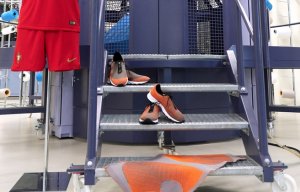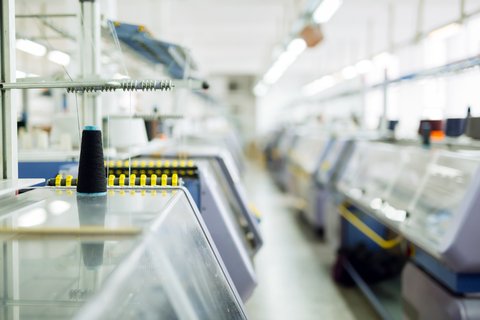
Producing advanced shoe uppers with Terrot machines
For years, fashion companies have explored how to mass-produce custom garments, but problems with efficiency and affordability have held up mass adoption.

28th December 2018
Knitting Industry
|
New York, NY
The collaboration between Ministry of Supply and the Self-Assembly Lab approaches the problem from a different perspective: Their sweater, coming to stores within a few months, can be mass-produced in standard sizes. The customisation process happens in-store, instead of during the production process.
This smart sweater doesn’t need a battery, nor is it robotically knitted using metal thread or shape memory alloy, which would traditionally be used to make a material change its form. Instead, the fabric shrinks when exposed to heat, thanks to both the structure of the knit and the combination of materials used. The researchers say that the shape-shifting technology depends on the way that two different off-the-shelf materials interact together when they’re exposed to heat.
“People want to make smart garments and shoes, but they’re always putting batteries in your shoes,” said Skylar Tibbits, the founder and co-director of the Self-Assembly Lab. “We want them to be active and smart, but passive in the sense that it’s all based on materials.”
Tibbits and his team developed the fabric through hundreds of experiments, combining different types of materials together and then trying out different knitting patterns to see how they would react to each other when exposed to heat. The research, which is part of a grant from the MIT-based non-profit organisation Advanced Functional Fabrics of America, was originally aimed at creating reversible transformations when it comes to shape and porosity, to make garments more breathable or waterproof based on temperature and moisture. But the team unexpectedly stumbled upon a way to create a permanent transformation, which is what enables this kind of custom tailoring.
Tibbits says that original research into reversible transformation will continue. For now, his team is working with Ministry of Supply to turn their discovery about permanently changing a garment’s shape using heat into a full-fledged commercial product, starting with the company’s forthcoming in-store sweater customization experience.
Boston-based Ministry of Supply, which was founded on the idea of bringing performance fabrics usually used in sports to professional attire, has experimented with robotic knitting and customisation before. A few years ago, the company released a robotically knit blazer that customers could personalise by changing details like the cuff colour and the yarn type.
More recently, the start-up offered a customisation experience in its Santa Monica store, where it took a thermal map of a customer’s body and then added ventilation to specific areas that tend to overheat. Each experiment has allowed the company to test out new technology for customising a different aspect of design–from aesthetics, to functionality, to fit–and Gihan Amarasiriwardena, co-founder and president of Ministry of Supply, eventually hopes to scale these experiments up so the custom garments are available to more people. “The vision is one-hour photo,” said Amarasiriwardena. “That’s something we’d love to bring to clothing.”
Within the next three or four months, Amarasiriwardena hopes to station a six-axis robot inside one of Ministry of Supply’s stores, where customers can watch it use heat to alter the sweaters. The MIT team will continue to work on more applications of these active textiles over the next year, as part of the Self-Assembly Lab’s larger goal of creating “programmable” materials.
Further reading
Changing knitwear production through on-demand manufacturing

Business intelligence for the fibre, textiles and apparel industries: technologies, innovations, markets, investments, trade policy, sourcing, strategy...
Find out more